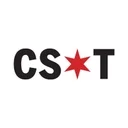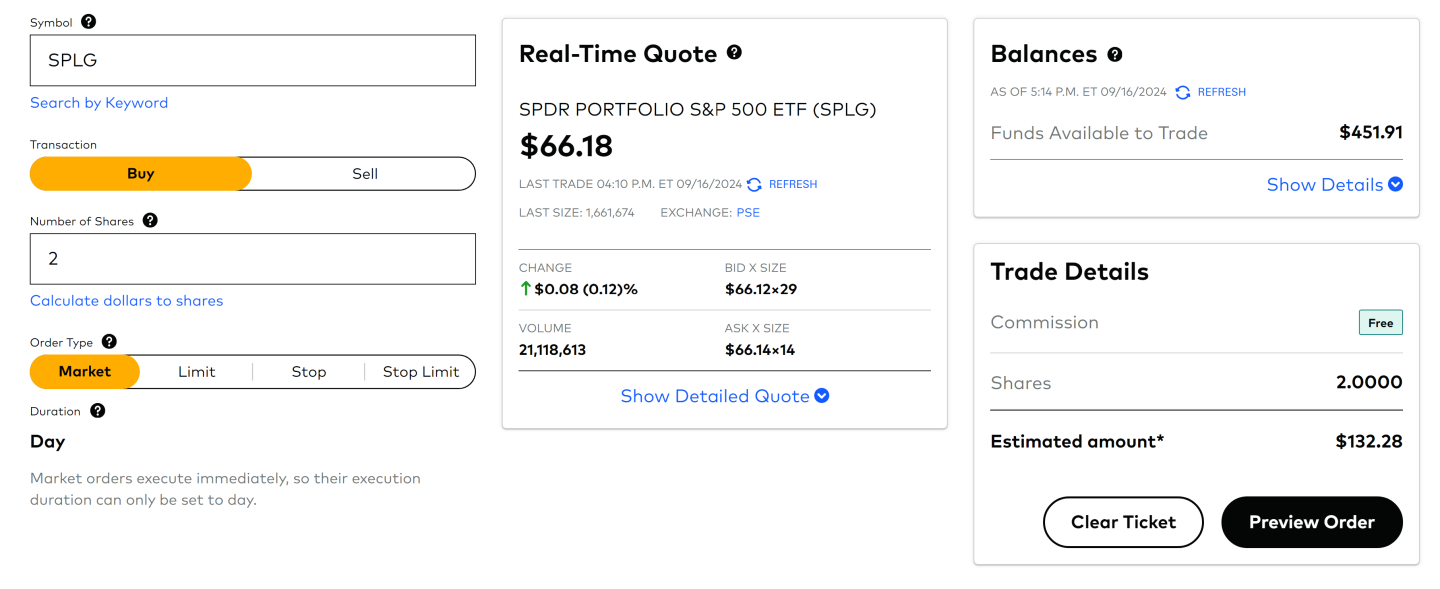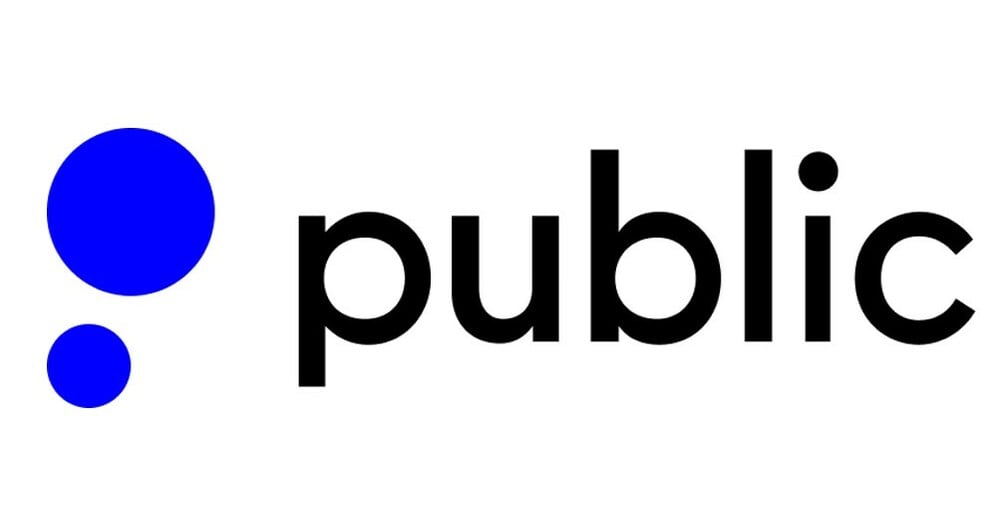The Best ETFs for June 2025 and How to Invest
Here's a rundown of the best large-cap, small-cap and bond ETFs this month, plus how to buy them in just four steps.

Many, or all, of the products featured on this page are from our advertising partners who compensate us when you take certain actions on our website or click to take an action on their website. However, this does not influence our evaluations. Our opinions are our own. Here is a list of our partners and here's how we make money.
The investing information provided on this page is for educational purposes only. NerdWallet, Inc. does not offer advisory or brokerage services, nor does it recommend or advise investors to buy or sell particular stocks, securities or other investments.
Exchange-traded funds can be an excellent entry point into the stock market for new investors. They’re cheap and typically carry lower risk than individual stocks since a single fund holds a diversified collection of investments.
Already an investor and want to skip ahead? ↓ Jump to the best ETFs list
How to buy an ETF
Investing in ETFs takes just a few steps. First, you’ll need a brokerage account. Then, you’ll need to find a low-cost ETF that suits your goals, using a screener tool. Once you’ve found the right fund, just place the trade and monitor your investment.
1. Open a brokerage account
You’ll need a brokerage account to buy and sell securities like ETFs. If you don’t already have one, see our resource on brokerage accounts and how to open one. This can be done online, and many brokerages have no account minimums, transaction fees or inactivity fees. Opening a brokerage account may sound daunting, but it’s really no different than opening a bank account.
If you’d rather have someone do the work of investing for you, you might be interested in opening an account with a robo-advisor. Robo-advisors build and manage an investment portfolio for you, often out of ETFs, for a low annual fee (typically 0.25% of your account balance). Because robo-advisors offer curated investment portfolios, you may not be able to find and invest in the ETFs outlined above. But that’s part of their appeal — the robo-advisor picks investments for you. (Here’s our list of the top robo-advisors.)
To screen and invest in the specific ETFs you want, you’ll need a brokerage account at an online broker.
» Want to compare options? See our full list of the best brokers for ETF investors.
2. Choose ETFs with screening tools
Now that you have your brokerage account, it’s time to decide which ETFs to buy. Whether you’re after the best-performing broad index ETFs or you’d like to search for others on your own, there are a few ways to narrow your ETF options to make the selection process easier.
Most brokers offer robust screening tools to filter the universe of available ETFs based on a variety of criteria. There are thousands of ETFs listed in the U.S. alone, so screeners are critical for finding the ETFs you’re looking for. Try using the criteria below in your brokerage’s screener to narrow them down.
Administrative expenses. Also known as expense ratios, these expenses cut into profit, so the lower the better. According to the Investment Company Institute, the average expense ratio for equity index ETFs is 0.15%. This could be a good range to start with in your screener, but some popular ETFs have expense ratios lower than this.
Commissions. These are fees you pay per transaction when you buy or sell an ETF. Commissions are rare at most major online brokers, but it’s good to check before you buy. Brokers that charge a commission often offer select ETFs commission-free.
Volume. This shows how many shares traded hands over a given time period. It’s an indicator of how popular a particular fund is.
Holdings. You’ll be able to see the top holdings in the fund, which simply means the individual companies the fund invests in.
Performance. While past performance doesn’t indicate future returns, it can still be useful to compare the history of similar funds. Look at a fund's long-term track record, such as its three, five or 10-year performance, to get a sense of how it has performed historically.
Trading prices. ETFs trade like stocks — you’ll be able to see current prices, which dictate how many shares you can afford to buy.
Asset class. Stocks and bonds dominate ETF holdings. But some funds are composed of commodities, currencies, alternative investments, a combination of asset types, etc.
Geography. Some ETFs hold global investments. Others focus on specific regions, countries and even individual states.
Segment. This is a way to categorize the assets that make up an ETF’s holdings. For equity-based funds, think company size or industry. For fixed-income ETFs, think corporate, municipal or government bonds.
Investment style. ETFs can be a useful way to express a specific investment strategy. Examples include aligning investments with your values, investing in growth- or value-based funds, or investing in an actively managed fund.
» Need to back up? Read our guide to ETFs
3. Place the trade
The process for buying ETFs is very similar to the process for buying stocks. Navigate to the “trading” section of your brokerage’s website; in this context, “trade” means you’re either buying or selling an ETF. You’ll buy the ETF using its ticker symbol — here’s more on that and other basic terms you’ll need to know:
Ticker symbol | The unique identifier for the ETF you want to buy. Be sure to check you have the correct one before proceeding. |
Price | The current trading price is determined by:
|
Number of shares | The number of shares you wish to buy. |
Order type | These basic order types should suffice, though additional options may be available:
|
Commission | Price per trade the brokerage will charge for its service. Most major brokerages now offer commission-free ETF trades. |
Funding source | The bank account linked to your brokerage account — be sure it has sufficient funds to cover the total cost. |
Before you execute your order, you’ll have an opportunity to double-check that everything is correct. Make sure your order is set up as intended: Check the ticker symbol (ETFs with similar ticker symbols can be wildly different), order type and that you haven’t made a potentially costly typo with any numbers — for example, typing 1,000 shares when you intended to buy only 100.
4. Sit back and relax
Congratulations, you’ve just bought your first ETF. These funds can help form the basis of a well-diversified portfolio and serve as the first step in a long-lasting investment in the markets. There’s no need to compulsively check how this ETF (or your other investments) is performing, but you can access that information when you need it by checking the ticker symbol on your brokerage’s website or even just by typing it into Google.
NerdWallet rating 4.8 /5 | NerdWallet rating 4.6 /5 | NerdWallet rating 4.6 /5 |
Fees $0 per online equity trade | Fees $0 | Fees 0% - 4% varies by type of transaction; other fees may apply |
Account minimum $0 | Account minimum $0 | Account minimum $0 |
Promotion None no promotion available at this time | Promotion Earn up to $10,000 when you transfer your investment portfolio to Public. | Promotion Get $200 in crypto when you sign up. Terms Apply. |
Best large-cap ETFs
One way for beginner investors to get started is to buy ETFs that track broad market indexes, such as the S&P 500. In doing so, you’re investing in some of the largest companies in the country with the goal of long-term returns. Other factors to consider include risk and the fund’s expense ratio.
To arrive at our list, we looked for ETFs with expense ratios below 0.5% that hold the largest U.S.-based companies. We excluded leveraged and inverse ETFs. The results are listed below in order of one-year performance.
Ticker | Company | Performance (Year) |
|---|---|---|
AUMI | Themes Gold Miners ETF | 87.89% |
CHGX | Stance Sustainable Beta ETF | 69.04% |
RING | iShares MSCI Global Gold Miners ETF | 64.24% |
SLVP | iShares MSCI Global Silver and Metals Miners ETF | 53.93% |
Source: Finviz. Data is current as of June 23, 2025, and is intended for informational purposes only. | ||
Best small-cap ETFs
Our table below shows small-cap ETFs that invest in companies with values under $2 billion and show strong growth potential. However, small-cap companies come with additional risks compared with investing in more established companies. (Learn more about small-cap ETFs here.)
Ticker | Company | Performance (Year) |
|---|---|---|
SGDJ | Sprott Junior Gold Miners ETF | 53.98% |
SILJ | Amplify Junior Silver Miners ETF | 26.85% |
ECNS | iShares MSCI China Small-Cap ETF | 20.99% |
DISV | Dimensional International Small Cap Value ETF | 17.93% |
FDTS | First Trust Developed Markets ex-US Small Cap AlphaDEX Fund | 16.97% |
ISVL | iShares International Developed Small Cap Value Factor ETF | 16.79% |
SCJ | iShares MSCI Japan Small-Cap ETF | 16.79% |
Source: Finviz. Data is current as of June 23, 2025, and is intended for informational purposes only. | ||
Best bond ETFs
Bond ETFs are a low-risk investment that is made up of bonds and other fixed-income investments. This list excludes actively managed and leveraged ETFs.
Ticker | Company | Performance (Year) |
|---|---|---|
GOLY | Strategy Shares Gold Enhanced Yield ETF | 35.68% |
ICVT | iShares Convertible Bond ETF | 12.93% |
CWB | SPDR Bloomberg Convertible Securities ETF | 11.59% |
XHYT | BondBloxx USD High Yield Bond Telecom Media & Technology Sector ETF | 4.70% |
STPZ | PIMCO 1-5 Year U.S. TIPS Index ETF | 4.20% |
HYXF | iShares ESG Advanced High Yield Corporate Bond ETF | 3.85% |
Source: Finviz. Data is current as of June 23, 2025, and is intended for informational purposes only. | ||
Categories of ETFs
There are many types of ETFs that can expose your portfolio to different assets and markets. By including other sectors and types of investments within your investment portfolio, you're diversifying your assets.
Diversification brings down risk. In the event that one company or sector does not perform well, you have many others that may support the performance of your portfolio as a whole. You should evaluate your financial plan to decide if any of these types of ETFs are right to include in your portfolio. You'll need to consider your investment goals and risk tolerance.
Here's a list of pages that show the best-performing ETFs in various categories:
On this page
On this page

















